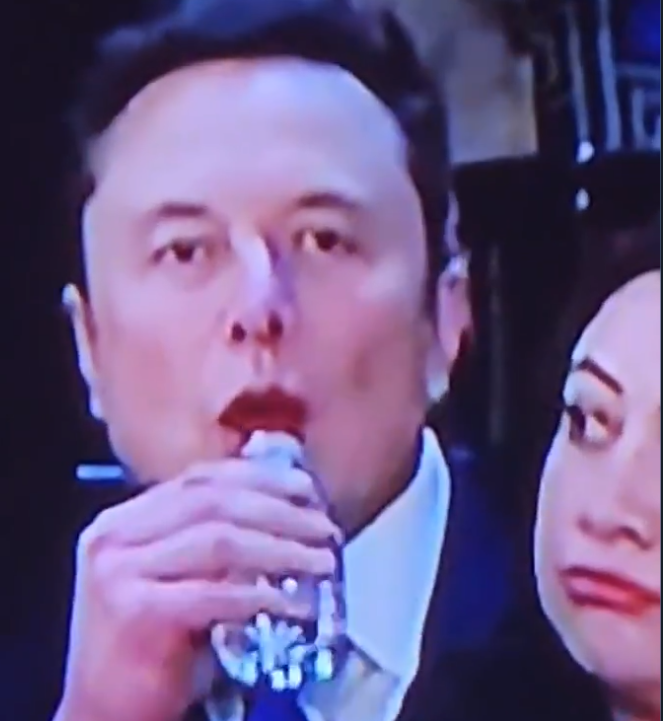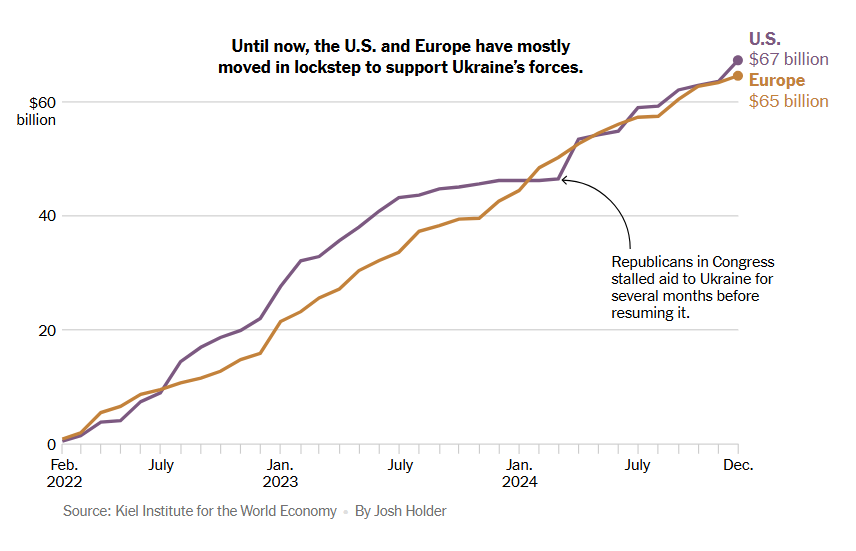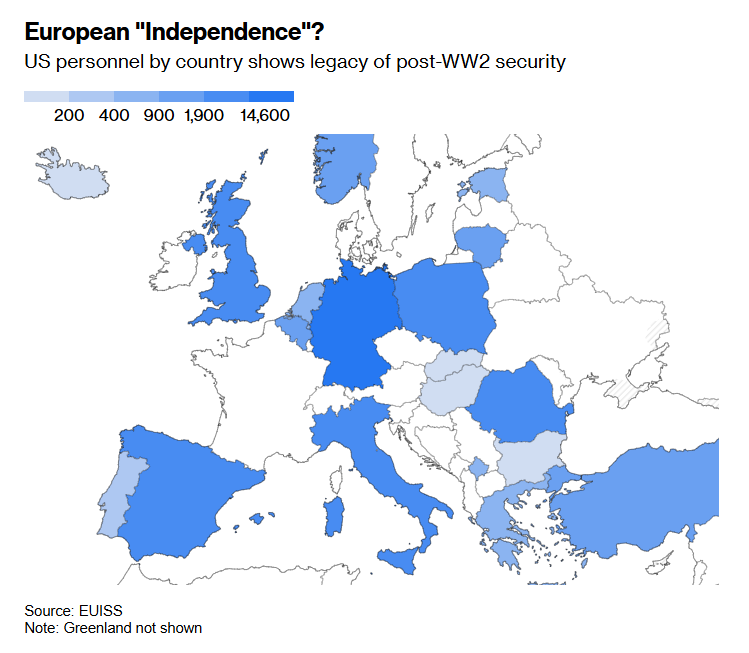-
Posts
15024 -
Joined
-
Days Won
8
Content Type
Profiles
Forums
Store
Downloads
Recruiting - 2020
2019-2020 Football Season
Football
Entertainment
Sports
News and Business
Cloak Room
Transfer Portal
Recruiting
Events
Everything posted by bolverk
-
Yeah, it's a great thing my disabled daughter receives federal financial assistance to help her and others like her in going to a college 2,000 miles away that happens to be private with a $40k per year tuition and which is the absolutely only school in the entire fucking country that offers instruction for people like her in her chosen field. At the moment, I'm not sure if that assistance program will be transferred and offered through some other federal agency so she can wrap up one more year to get her degree, but just in case any Trump-supporting lurkers are reading this, go to hell.
-
Connections: Sports Edition Puzzle #164 🟡🟡🟡🔵 🟡🟡🟡🟡 🟢🟢🟢🟢 🟣🟣🟣🔵 🟣🟣🔵🔵 🟣🟣🔵🔵 Got there on yellow and green. Didn't see purple, but obviously do now. Had absolutely no clue whatsoever on blue.
-
B+✔️ Wordle 1,356 3/6 ⬛🟩🟨🟨🟨 🟩🟩🟨🟨🟨 🟩🟩🟩🟩🟩 Connections Puzzle #634 🟦🟨🟨🟨 🟩🟩🟩🟩 🟨🟨🟨🟨 🟪🟪🟪🟪 🟦🟦🟦🟦 😎 Daily Chill 220 7️⃣8️⃣ 5️⃣6️⃣ m-w.com/games/quordle/ 🟨⬜🟩⬜⬜ ⬜🟨⬜🟨⬜ 🟩🟩⬜⬜⬜ ⬜⬜⬜⬜⬜ ⬜⬜⬜⬜⬜ ⬜⬜⬜⬜⬜ 🟩⬜⬜⬜🟩 ⬜⬜⬜⬜🟩 🟩⬜⬜⬜🟩 ⬜⬜⬜🟩🟩 ⬜⬜⬜⬜🟩 🟩⬜⬜🟩🟩 🟩🟩🟩🟩🟩 ⬜⬜⬜⬜🟩 ⬛⬛⬛⬛⬛ 🟩🟩🟩🟩🟩 ⬜⬜⬜⬜⬜ ⬜🟨⬜⬜⬜ 🟩⬜🟨⬜⬜ ⬜⬜🟨⬜⬜ ⬜🟨⬜⬜⬜ ⬜🟨⬜⬜⬜ 🟩🟩🟩⬜🟩 ⬜🟩🟩⬜🟩 🟩🟩🟩🟩🟩 ⬜🟩🟩🟩🟩 ⬛⬛⬛⬛⬛ 🟩🟩🟩🟩🟩
-

Elon Musk: Nazi traitor piece of shit [Confirmed]
bolverk replied to MaybeACoordinator's topic in Daily Texan
-
Yeah, there's a thread around here someplace on that and other KC fans who attended the game and lost toes, thumbs, fingers, and other various bodyparts to frostbite during that weekend. It was a fun read if I recall correctly.
-
Times like these never, seldomly, occasionally, often, or frequently give me thoughts of an unspecified nature that I prefer not to express on a public message board. Oh, hi Kash! Edit: Sorry I didn't see you there. Hey Dong Buongiorno!
-
I tend to agree with you on this. If a conflict were to occur between Europe and Russia, I tend to think we'd largely remain on the sidelines - at least publicly - for appearances. An open alliance with Russia, involving the US military openly waging war against European ones, would prove intolerable for the American public and the armed forces. Even this regime understands that, so I think there'd be some sympathetic statements toward former allies, but essentially, we'd be publicly neutral. Besides, not taking a side would really mean we've taken a side.
-
Pretty much aligns with the spheres of influence that they seem to be going for.
-
I vote to start with the MBAs first.
-
What? You don't trust this cast of characters to keep our secrets? Defense: Pete Hegseth Homeland Security: Kristi Noem National Intelligence: Tulsi Gabbard CIA: John Ratcliffe FBI: Kash Patel / Oingo Boingo
-
I'm not qualified to give you any answer other than some 007 quip.
-
Israel joined the US in that vote last week AGAINST calling for Russia's withdrawal from Ukraine. In doing so, the US and Israel joined the rogue nation club, consisting of 18 shitty countries, including such stalwarts of "truth, justice, and the asshole way" as Russia, North Korea, Belarus, and Nicaragua. Edit: So, yes, Bibi will support Trump. The UK, on the other hand, is with the rest of the Free World and would be fools to help this regime.
-

Elon Musk: Nazi traitor piece of shit [Confirmed]
bolverk replied to MaybeACoordinator's topic in Daily Texan
Yeah, but you don’t have to throw that far to hit something in such a small country. -
In the meantime, Netanyahu has already reneged on the ceasefire deal by cutting all food, fuel, medicine, and other supplies to Gazan refugees. In other words, the Israeli government is trying to starve the Palestinians out of Gaza with our complicity in this latest war crime, of course. Surly’s “Christ follower” contingent, however, remains unphased.
-
They got ahead of themselves 8 years ago when they killed the TPP.
-

Elon Musk: Nazi traitor piece of shit [Confirmed]
bolverk replied to MaybeACoordinator's topic in Daily Texan
The local VA hospital in this small town employs about 500, so you can obviously do the math on that one. Imagine a single neighborhood of 100 homes in such a town where all the breadwinners are suddenly unemployed. Are they going to work out in the oil fields, the refinery, Walmart, or the prison? I guess that new subdivision being built won’t be needed after all, especially since oil is down $20 since last spring. But, more importantly, 56,000+ vets live in the service region covering 33 counties, about half of whom get most of their care at the main hospital here or supporting clinics (also seeing staff cuts). This would adversely affect care for vets in Midland/Odessa, Abilene, San Angelo, parts of Far West Texas, and Southeastern NM. FAFO, y’all. -
Pretty much only confirms suspicions that have been voiced around here: it was an ambush. How Soon Could Ukraine’s Forces ‘Start to Buckle’ Without U.S. Weapons? It could be as little as four months, say analysts, as Europe scrambles to plug the hole in support left by President Trump’s suspension of military aid. Without billions of dollars in American-made weapons, it may be only a matter of time before Ukraine’s forces falter against Russia. How much time, however, depends on how quickly Europe and Ukraine can make up for the artillery, missiles, air-defense systems and other arms that Trump administration officials said on Monday were being put on hold. The United States had committed to delivering as much as $11 billion in weapons and equipment to Ukraine this year. Some of it was from Pentagon stockpiles, while some was ordered through new defense contracts, according to a new analysis by the Center for Strategic and International Studies in Washington. A former senior U.S. defense official on Tuesday said the actual figure was likely closer to $9 billion. Despite Europe’s pledges of unwavering support for Ukraine, which have only intensified since the Trump administration began pulling back, it would be nearly impossible for it to fill the weapons gap quickly. European defense industries have ramped up, but only in fits and starts. And individual countries need to maintain their own weapons stockpiles. “Europe can’t possibly replace American aid,” the former deputy of Ukraine’s military general staff, Lt. Gen. Ihor Romanenko, said last month. Ukraine itself has been churning out drones and building up domestically made artillery systems, and it plans to spend 26 percent of its budget on defense this year. But some top Ukrainian officials say the military will be in dire straits if American support is not restarted. “Ukraine definitely has a safety margin of about six months even without systematic assistance from the United States, but it will be much more difficult, of course,” one lawmaker, Fedir Venislavskyi, told the news agency RBC-Ukraine on Tuesday. Some analysts say they think even that may be overly optimistic. “Certainly, by the four-month time period, their forces would start to buckle, because they just wouldn’t have enough munitions and equipment to replace what they’ve lost,” said one of the authors of the Center for Strategic and International Studies study, Mark F. Cancian, a former White House weapons strategist. Why can’t Europe fill the gap? Of the $136 billion in military aid that allies provided Ukraine from the start of the full-scale Russian invasion in February 2022 to the end of last year, nearly half came from the United States, according to the Kiel Institute for the World Economy, a German research organization. The American share has dwindled over time as the defense industries in Ukraine and Europe have accelerated production. Only about 20 percent of military hardware currently supplied to Ukraine comes from the United States, according to recent estimates by the Royal United Services Institute, an analytical group affiliated with the British military. “But the 20 percent is the most lethal and important,” said Malcolm Chalmers, the institute’s deputy director general. Ukraine won’t abruptly collapse without the American weapons, Mr. Chalmers predicted. “The effect,” he said, “will be cumulative.” The United States, the world’s largest economy, simply has more resources at its disposal. Its Air Force, for example, has 17 large electronic surveillance aircraft, while Britain has only three, according to Douglas Barrie, a military aerospace expert at the International Institute for Strategic Studies in London. The United States contributes over half of all NATO’s fighter jets and ground-attack aircraft. Citing the “short-term urgency to act,” the president of the European Commission, Ursula von der Leyen, on Tuesday announced a $841 billion plan to increase defense budgets across Europe and encourage joint procurement among states to speed weapons manufacturing. But previous efforts have fallen short, with E.U. countries pulled between domestic spending priorities and defense contractors unable to produce vast amounts of costly weapons without upfront capital. Ms. von der Leyen seemed to acknowledge this. “The real question in front of us is whether Europe is prepared to act as decisively as the situation dictates, and whether Europe is ready and able to act with speed and with the ambition that is needed,” she said. Artillery production in Europe is now nearly able to keep up with the wartime demands, said Camille Grand, who was NATO’s assistant secretary general for defense investment when Russia invaded. That is a remarkable turnabout for an industry that had atrophied after the end of the Cold War in 1991. But manufacturers of more advanced weapons like the air defenses Ukraine says are crucial to its survival are still struggling to quickly produce those systems in large numbers. It can take years to hire and train additional workers, expand factory space and obtain rare earths and other raw materials in a competitive market that has been slowed by a limited supply chain. And industry executives say they cannot invest in those improvements without the guarantee of contracts that generally run for at least a decade, and that some governments have been unwilling to provide. “We are not on a real war economy footage as we speak, certainly by comparison with Russia,” said Mr. Grand, now a weapons expert at the European Council on Foreign Relations. He said it would take more political will in Europe to get defense contracts rolling: “Money is not sufficient to solve everything.” What is Ukraine doing to arm itself? Ukraine’s prime minister, Denys Shmyhal, insisted on social media this week that “of course, our military, the government, have the capabilities, the tools to maintain the situation on the front line.” But he would not disclose what is left in Ukraine’s stockpile, likely to prevent exposing any vulnerabilities to Russia. Mr. Shmyhal said that Ukraine would be able to produce enough artillery for itself by later this year, and that it was building its own armored vehicles and antitank weapons. Last year, Ukraine built more than one million first-person-view drones, and intends to increase production in 2025. Ukraine is also reportedly trying to produce air defenses as sophisticated as the American-made Patriot system, which can intercept ballistic missiles. Each Patriot system — consisting of interceptor missiles, launchers, radar and a command center — can cost $1 billion and takes up to two years to build. Of the seven Patriot air defense systems that the United States and Germany have given Ukraine, at least two have been destroyed, according to the weapons tracking site Oryx. Shorter-range air defenses have been sent by Britain, France, Italy, the Netherlands and Romania, among others. But Ukraine is the second-largest country in Europe, and the Russian bombardment has been incessant. “You’re always going to have to pick and choose — you aren’t going to be able to defend against everything,” said Mr. Barrie, the military aerospace expert. ‘Doomed?’ In his study, titled “Is Ukraine Now Doomed?” Mr. Cancian predicted that without U.S. military aid, Kyiv would be forced to accept an unfavorable cease-fire agreement with Russia. That might mean ceding a fifth of its territory and giving up its aspirations to join NATO. And some allies might now decide to cut back their own aid, reasoning that without American support, “this is a lost cause,” Mr. Cancian said in an interview. Along with the suspended military aid, the Trump administration also paused sharing intelligence with Ukraine, the C.I.A.’s director, John Ratcliffe, said in an interview with Fox Business News on Wednesday. He predicted that the pause “will go away” if President Volodymyr Zelensky of Ukraine shows more willingness to work on Mr. Trump’s plan for a cease-fire with Russia. Fears also have been raised recently that Ukraine will lose access to the Starlink satellite internet system that facilitates military communication and is owned by Elon Musk, Mr. Trump’s close ally. But it is clear that “halting security assistance will only make it more challenging for Ukraine to reach a just and lasting end to this war,” said David Shimer, who was the National Security Council’s director for Eastern Europe and Ukraine during the Biden administration. “It will reduce Ukraine’s leverage, weaken the Ukrainian military, and therefore undermine Ukraine’s negotiating position with Russia,” Mr. Shimer said. “The United States should be focused on strengthening, not weakening, Ukraine’s hand ahead of a negotiation.”
-
Must've been feeling drunk on power after the show.
-

Elon Musk: Nazi traitor piece of shit [Confirmed]
bolverk replied to MaybeACoordinator's topic in Daily Texan
Looks like 80,000 cut from about 480,000 existing. https://apnews.com/article/veterans-affairs-cuts-doge-musk-trump-f587a6bc3db6a460e9c357592e165712 -
I guess making sure we have accurate economic data isn't going to be a thing anymore. Experts worry about degradation of economic data after advisory committees disbanded Here at Marketplace, we report on economic data from the government all the time: stats on housing, the job market, inflation, and much more. They help us help you understand where the economy is and where it’s heading. Government data informs business decisions, and assists policy makers to, well, make policy. But now, the Commerce Department has disbanded two groups that worked to ensure the government’s economic data paints a realistic picture. The Federal Economic Statistics Advisory Committee and the Bureau of Economic Analysis Advisory Committee have been around for decades. What happens next now that they’re gone? Erica Groshen had no idea this news was coming: “This came out of the blue, nothing up until I got the email yesterday,” she said. And she was on one of the committees. An economics advisor at Cornell University, Groshen was told that the decades-old committee was getting disbanded because its purpose had been fulfilled. “You don’t fulfill an ongoing mission by canceling this communication mechanism,” she said. That mission? To get a bunch of experts at the top of their economic fields to help the government. “When the BEA wants to develop a new methodology or maybe go into a new area they haven’t been before, they can run their ideas by the committee,” said retired economist and committee member Marshall Reinsdorf. He said advice was one major benefit. The other was government transparency — the committees opened their doors to the public. “It gives them a chance to reach out and get their message out to a broader community,” Reinsdorf said. Getting rid of these two committees doesn’t save much money. Mainly because the members weren’t getting paid, said former committee chair David Wilcox with Bloomberg Economics and the Peterson Institute for International Economics. “So we’re talking about eight plane tickets, twice a year, one night at a non-fancy hotel. This was really inexpensive stuff,” he said. And it was money well spent, Wilcox said. Former committee chair Louise Sheiner with the Brookings Institution said with less input, the data that the government gathers will get worse over time. And that data is supposed to provide answers on GDP and productivity and jobs and inflation. “Depending on what question you’re asking, you’re going to go to the data, and if the data are not good, your answers to those questions are also not going to be good,” she said. Sheiner said disbanding the committees was a mistake. The Bureau of Economic Analysis declined to provide Marketplace with a comment, and the Commerce Department didn’t respond to our request.
-
It's almost as if half this country is incapable of conducting second-order thinking. Other short-sighted news that will eventually bite decision-makers, investors, and the general public in the ass: Experts worry about degradation of economic data after advisory committees disbanded Here at Marketplace, we report on economic data from the government all the time: stats on housing, the job market, inflation, and much more. They help us help you understand where the economy is and where it’s heading. Government data informs business decisions, and assists policy makers to, well, make policy. But now, the Commerce Department has disbanded two groups that worked to ensure the government’s economic data paints a realistic picture. The Federal Economic Statistics Advisory Committee and the Bureau of Economic Analysis Advisory Committee have been around for decades. What happens next now that they’re gone? Erica Groshen had no idea this news was coming: “This came out of the blue, nothing up until I got the email yesterday,” she said. And she was on one of the committees. An economics advisor at Cornell University, Groshen was told that the decades-old committee was getting disbanded because its purpose had been fulfilled. “You don’t fulfill an ongoing mission by canceling this communication mechanism,” she said. That mission? To get a bunch of experts at the top of their economic fields to help the government. “When the BEA wants to develop a new methodology or maybe go into a new area they haven’t been before, they can run their ideas by the committee,” said retired economist and committee member Marshall Reinsdorf. He said advice was one major benefit. The other was government transparency — the committees opened their doors to the public. “It gives them a chance to reach out and get their message out to a broader community,” Reinsdorf said. Getting rid of these two committees doesn’t save much money. Mainly because the members weren’t getting paid, said former committee chair David Wilcox with Bloomberg Economics and the Peterson Institute for International Economics. “So we’re talking about eight plane tickets, twice a year, one night at a non-fancy hotel. This was really inexpensive stuff,” he said. And it was money well spent, Wilcox said. Former committee chair Louise Sheiner with the Brookings Institution said with less input, the data that the government gathers will get worse over time. And that data is supposed to provide answers on GDP and productivity and jobs and inflation. “Depending on what question you’re asking, you’re going to go to the data, and if the data are not good, your answers to those questions are also not going to be good,” she said. Sheiner said disbanding the committees was a mistake. The Bureau of Economic Analysis declined to provide Marketplace with a comment, and the Commerce Department didn’t respond to our request.
-

America's Foreign Policy & Other Shit Going On Around the World thread
bolverk replied to bolverk's topic in Cloak Room
-

America's Foreign Policy & Other Shit Going On Around the World thread
bolverk replied to bolverk's topic in Cloak Room
A former supreme allied commander of NATO weighs in on some of the implications of a possible US withdrawal from NATO. Europe Is Getting Ready for the End of NATO If Trump pulled the US out of the alliance, the European allies would no longer follow Washington’s lead on foreign policy. March 4, 2025 at 11:00 PM CST By James Stavridis This is a column I never dreamed I’d be writing, as a former supreme allied commander of the North Atlantic Treaty Organization. But sadly, given all the skeptical and increasingly divisive rhetoric about the venerable alliance emanating from Washington and Europe in the early days of the second Donald Trump administration, it is time to think about what the world would look like geopolitically if the US pulled out. Are we indeed in the last days of NATO? What would replace it, if anything? Or, if it survived, what would NATO look like without the US? Pulling America out of NATO would be a mistake of epic proportions — but there are influential politicians in the Republican Party who are seriously advocating doing so, or at least musing about the possibility. As Senator Markwayne Mullin of Oklahoma said recently: “NATO has not always been playing in our best interest. And when it’s not America’s best interest anymore, we should relook at things.” Last June, 46 House Republicans voted for an amendment defunding NATO. Vice President JD Vance was scornful about the alliance in his scathing speech at the Munich Security Conference last month. And of course, last week’s surreal public shouting match in the Oval Office between Trump and Ukrainian President Volodymyr Zelenskiy, catalyzed by Vance, doesn’t inspire much confidence in future NATO cooperation. The decision by the US to vote against a UN resolution condemning Russia’s invasion of Ukraine, joining with Russia and North Korea, was a shocking demonstration of the transatlantic alliance’s failing cohesion. -
New poll says 27% of Canadians view the United States as an 'enemy' country
Football ... Basketball ... Baseball ... Other Sports ... Futbol ... 🤫995🤫 ... Gambling ... Movies & TV ... Music ... Hobbies ... Lulz ... Food & Travel ... Daily Texan ... Business and Markets ... Cloak Room ... Help ... For Sale ... Board Discussion ... Subscribe!... Donate!... Advertise... COOKIE MONSTER!












